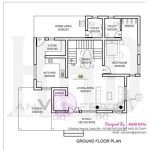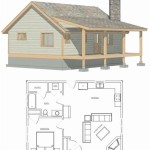Essential Aspects of Home Landscaping Plans
A well-designed home landscape plan can transform the exterior of your property, enhancing its aesthetic appeal, functionality, and overall value. Creating a successful plan involves considering various essential aspects to ensure a cohesive and practical outdoor space that meets your needs and preferences. This article will provide a comprehensive overview of the key elements of home landscaping plans, empowering you to create a beautiful and functional outdoor oasis.
1. Site Assessment and Analysis
The foundation of any successful landscape plan is a thorough site assessment and analysis. This involves evaluating the existing conditions of your property, including soil composition, drainage, sun exposure, and the surrounding environment. By understanding the unique characteristics of your site, you can make informed decisions about the types of plants, hardscaping elements, and overall design that will thrive in your landscape.
2. Design Principles
Landscape design adheres to certain principles that guide the arrangement and placement of elements within the plan. These principles include unity, balance, proportion, scale, and repetition. By incorporating these principles into your design, you can create a cohesive and visually appealing outdoor space that flows naturally and creates a sense of harmony.
3. Plant Selection
Choosing the right plants for your landscape is crucial for both aesthetic and practical reasons. Consider the climate, soil conditions, sun exposure, and desired function of the plants. Whether you opt for colorful annuals, lush perennials, stately trees, or fragrant shrubs, ensure that the plants you select are well-suited to your site and your personal preferences.
4. Hardscaping Elements
Hardscaping elements, such as patios, walkways, retaining walls, and water features, provide structure and functionality to your landscape. These elements can define spaces, enhance accessibility, and add visual interest. When selecting hardscaping materials, consider their durability, aesthetic appeal, and compatibility with the overall design.
5. Lighting
Proper lighting can transform the ambiance and functionality of your landscape, allowing you to enjoy your outdoor space even after sunset. Consider using a combination of ambient, accent, and task lighting to create a layered effect that highlights key features, improves safety, and extends the usability of your outdoor areas.
6. Water Features
Water features, such as ponds, fountains, and waterfalls, can add tranquility and visual appeal to your landscape. They also provide a habitat for wildlife and can help reduce stress levels. When designing water features, consider their size, shape, and the surrounding environment to ensure a harmonious integration with your overall landscape design.
7. Maintenance Plan
Once your landscape plan is complete, it's essential to establish a maintenance plan to ensure its long-term health and beauty. This plan should include regular mowing, watering, pruning, and fertilization. By following a consistent maintenance schedule, you can minimize pests, diseases, and overgrown vegetation to maintain the aesthetics and functionality of your outdoor space.

How Can You Develop A Comprehensive Landscape Design Plan Elite Landscaping

How To Plan A Landscape Design

Landscape Plans Renderings Drawings Landscaping Network

Landscape Plan

5 Parts Of A Landscape Design Plan

Landscape Plans Learn About Design Planning And Layout

A Backyard Plan For Kids And Children Landscaping Plans Designs Landscape

Home Garden Design Plans Layout Planning

Front Yard Landscaping Ideas Of 2024 Forbes Home

Site Plans








